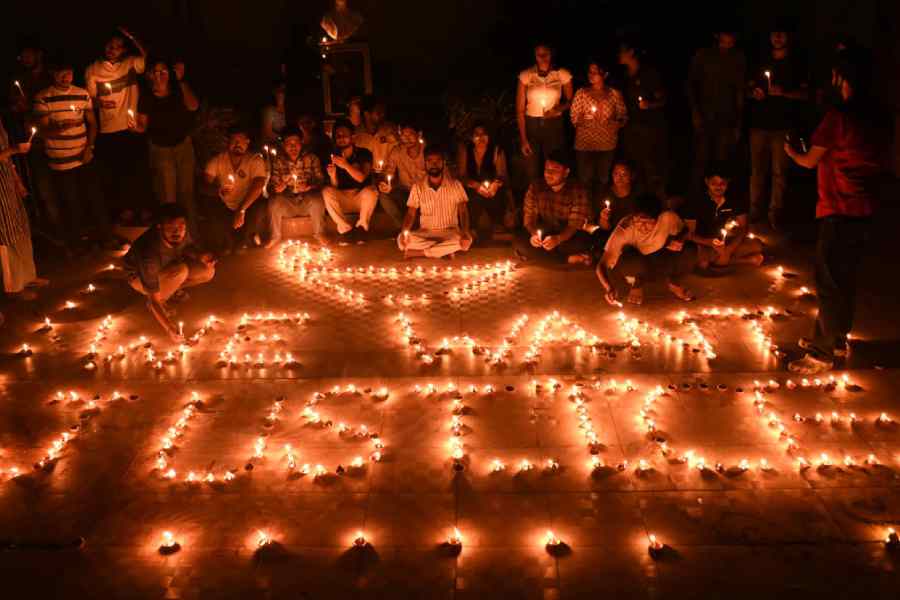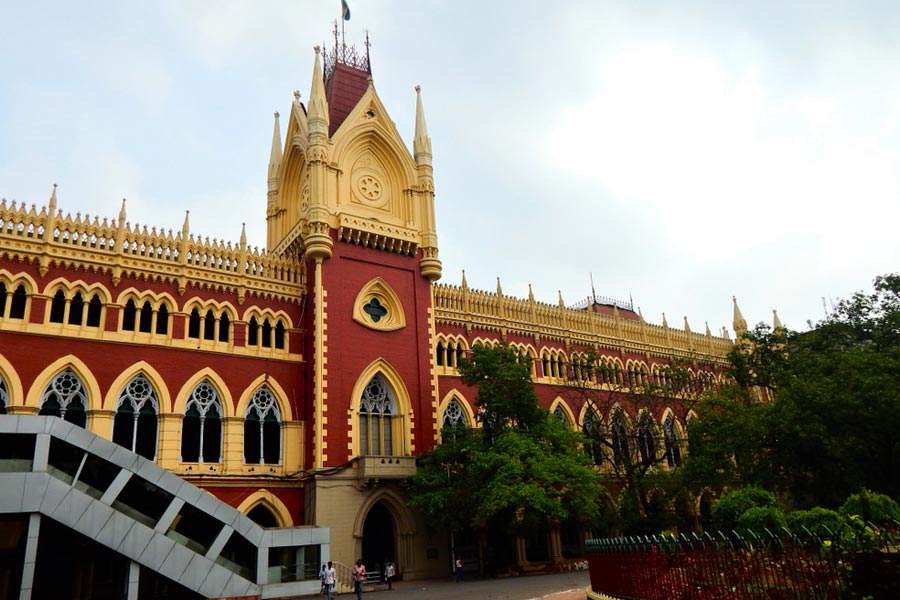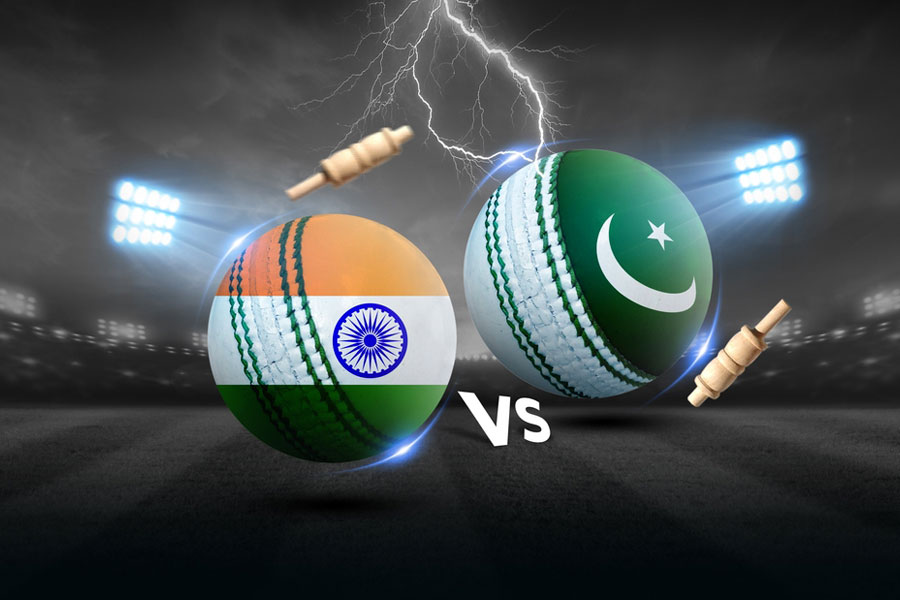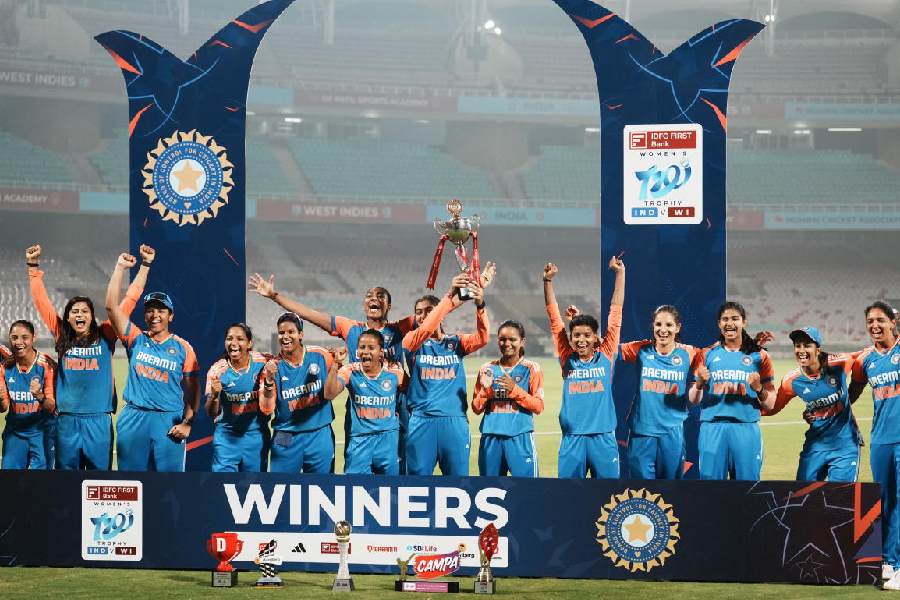Nearly two months have passed since the exceptionally brutal rape and murder of a young doctor in the R.G. Kar Medical College and Hospital, Calcutta. The protest rallies continue unabated. There were comparable incidents earlier in Bengal and, emphatically, in other states. They roused general outrage, but not on this scale. I have seen nothing like it in a life spent almost wholly in Calcutta.
Why this unprecedented upsurge? There is indeed a special factor. The victim perished in the hospital where she worked, where she should have been most secure. In fact, all citizens should think of a hospital as a space of care and security. However deficient they may be, government hospitals provide refuge and succour to the ailing poor.
The protests originated with the urban middle class, who hardly visit government hospitals these days. But they too think of the state health system as an index to the health of the entire system of governance. Here if anywhere, we may feel, some bedrock civilisational values should not be entirely lost. We are appalled to find that the loss is almost total. Each day brings its own tale of entrenched malfeasance, affronting every rule in the book.
Public indignation took another path as well. The horrific event bears directly on the issue of women’s safety. It triggered an outburst of not only alarm but spirited outrage in the women of Bengal and beyond. This manifested itself in ‘Reclaim the Night’ rallies of undreamt-of size and count on Independence Day eve and relentlessly thereafter. Women have been the most visible face of this wider movement, which has expanded by now to a general indictment of the ruling order.
The movement has thus acquired a uniquely complex chemistry. Its immediate end is ‘Justice for Abhaya’, meaning action not only against the immediate offenders but also the whole foul ecosystem that spawned them. This campaign is spearheaded by the doctors. Their actions have inspired and conditioned the wider people’s protest. During the doctors’ blockade of the health department and their nightlong vigil before the egregiously barricaded police headquarters, they were plied with food and facilities by the public, even by the shopkeepers who lost business in the turmoil.
But the popular mobilisation has its own motive power, inseparably melded with the doctors. In this synergy lies the strength of the total movement: there can be no question of priority or competition. R.G. Kar ignited a fiery revulsion against all that is vile in our polity, as though to atone for our inert complicity all these years. The common citizen is venting a sober anger she hardly knew she harboured. She is belatedly, hence the more fervently, asserting her identity as a humane stakeholder in a free democratic order. The same new-found conviction inspired fans of Calcutta’s three iconic football clubs to stand shoulder to shoulder holding one another’s banners, the Indian flag unfurled above them. Let that tableau symbolise our common commitment.
Two other features of the movement seem crucial, beyond the sheer volume of the gatherings: it is entirely non-violent and patently spontaneous, hence free of party politics. Starting from the urban middle class, the spirit of constructive protest has spread to other groups, other locales and other issues. Rural flood victims are declaredly drawing inspiration from the R.G. Kar movement to protest against their own plight.
Public life has attained a flashpoint where the people find they can cast off their subservience to the political class and their awe of bureaucracy. Junior doctors have dislodged certain senior officials (though others cling to their turf). Politicians have been sidelined or even barred entry. They do not relish the experience and are straining to recover lost ground. The Bharatiya Janata Party unleashed a series of rallies whose violence and turmoil contrasted with the unfailing peace and order of the genuine people’s protests. Almost worse are the repellent threats and abuse against the protesters emanating from the Trinamool Congress.
Knowledgeable observers say they have not seen a popular campaign of such force and volume in Bengal or India, and seldom anywhere in peacetime. Hence the most vital question: how can we preserve and employ this awe-inspiring power of public indignation?
We cannot indefinitely pour out, still less camp out, on the streets. That is a sure way to banalise people’s power and allow politicians to capture it. Yet this new-forged collective initiative is too precious a resource to lose. It is a covenant of our self-respect and well-being as citizens. We must invoke it not only for specific protests or demands but to raise consciousness, to identify issues heading towards crisis point and address them before they get there.
One such issue is playing out before our eyes. Thousands of aspiring schoolteachers have camped on the streets for years, awaiting the outcome of a selection process befouled by corruption and bad faith. It has mercifully not led as yet to such dire consequences as at R.G. Kar, though there have been suicides. The state school system is still more remote from the middle-class urban consciousness than government hospitals. But it caters to over 85% of students in Bengal. Its unheeded collapse is creating a human resource dearth that will undermine both Bengal’s economy and its social structure. The signs are already clear.
We cannot tell what will fire the collective imagination to break out in protest. But it is issues like this that our newly-roused consciousness must adopt to sustain and justify itself. That is also how it will expand into a truly popular movement across classes and communities. As it is, the undeniable suffering of poor patients was starting to alienate the striking doctors from the public, to the rulers’ delight. The gains from the unique protest movement might be dissipated as a result.
Systemic reform is a tall order. But the recent upsurge may embolden us, in the first instance, to seek small tentative victories along the way. Even that had seemed an unreal prospect till yesterday. It is something to cherish and build on.
Sukanta Chaudhuri is Professor Emeritus, Jadavpur University











